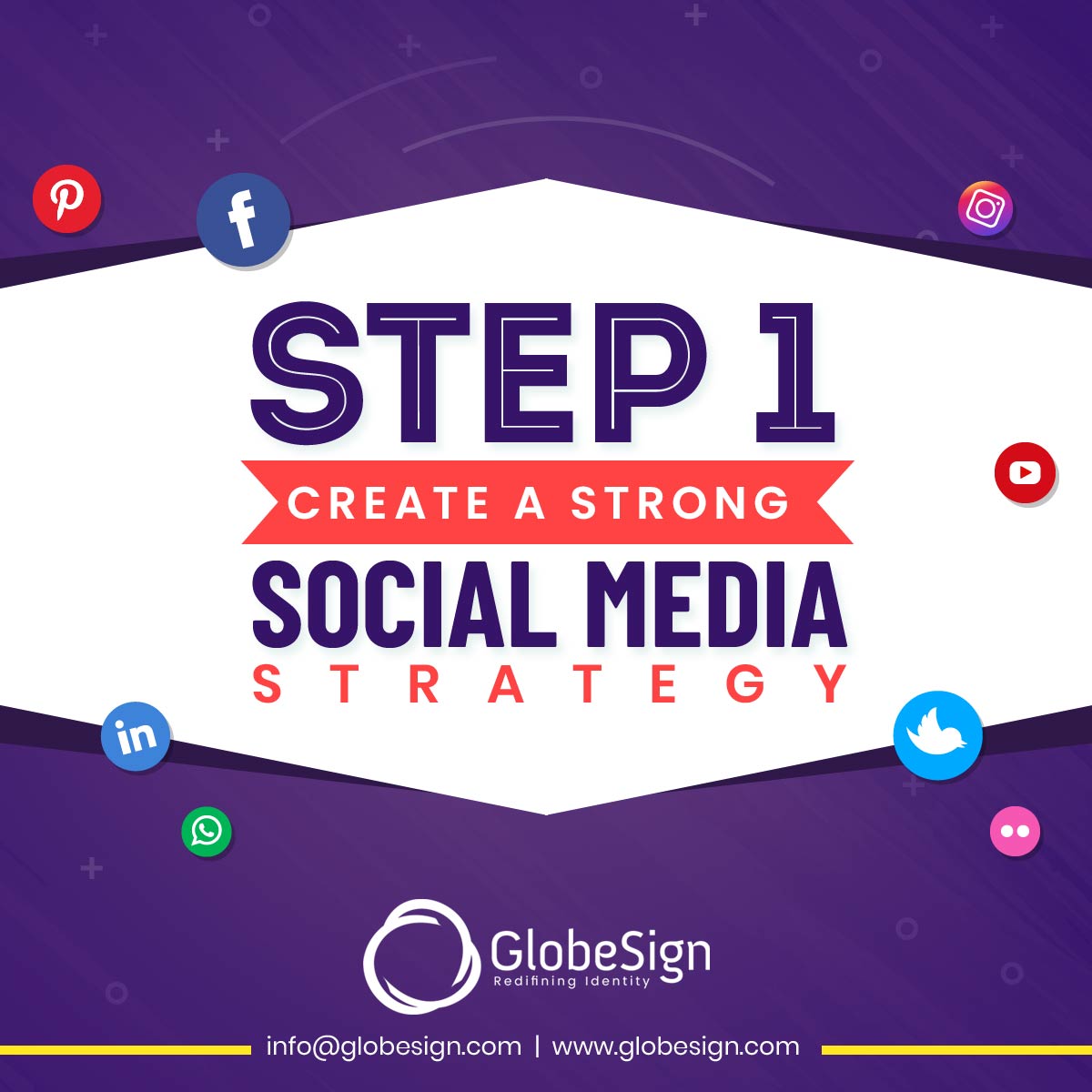Most social media marketing agencies in Canada create a plan of action and conduct their research before they run any social media campaign. As a social media company, we created this blog as your guide on how to create an effective social media plan (aka a strong social media strategy and budget) and how to conduct the right research. These steps will not only ensure your campaign is successful, but they will also help you build strong social media management skills.
Step 1: Create a Strong Social Media Strategy
Prior to any social media campaign, it is crucial to discuss and write down your campaign strategy. By making your team aware of campaign objectives, target audiences and your budget constraints, they are able to share more suitable ideas and create more relevant content. Your social media strategy also acts as a measuring tool to determine whether your campaign goals are being met or your target audience is being reached. We believe that in order to create a strong social media strategy, you should execute the following.
Set Smart Social Media Goals
“SMART” is a popular acronym used in goal setting. It stands for specific, measurable, attainable, relevant and time bound. A specific goal should be as unambiguous and as precise as possible. Incorporating the 5 W’s, who, what, where, when and why helps if you have trouble being specific. It’s also important to set measurable goals, so you can track your progress and modify your strategy to ensure your goals are met. Providing that your goals are challenging, setting sub goals can help keep you on track. Sub goals are secondary goals to your main campaign goal. For example, if your main goal is to run a 5 km marathon next month, you can set a sub goal to run 1 km by the first week. Continue to set sub goals until you’ve reached your goal of running a 5 km marathon.
Next, your campaign goal must be attainable because otherwise, you and your team will lose motivation when your goal is not achieved. Attainability can be easily determined by analyzing your current social media status and available resources. In terms of relevancy, your goal must align with your company’s long-term objectives to avoid confusing your team and your customers. Lastly, give yourself a time constraint to complete your goal; this adds urgency and forces good time management. An example of a smart goal is, “my goal is to increase my reach on Twitter and Facebook by 2000 by the end of this month by using trending Twitter hashtags and sharing my campaign content in relevant Facebook groups”. This is more constructive than saying “my goal is to increase my reach on Twitter and Facebook”.
Research your Social Media Audience and Creating Customer Personas
In order to maximize your reach, you need to research and select the right target audience. Start off by examining the age, location, interests, language etc. of your current audience and decide whether this audience is ideal for your upcoming campaign. If not, create customer personas for your intended audience. You need to get creative when creating your customer personas, really put yourself in their shoes. Give them a name, a family, an occupation, a salary, interests, personality traits, you name it! Once you have created a well-rounded persona, conduct research on how to create content that would appeal to this person. It’s smart to create a few customer personas instead of just one as this broadens your reach. For example, one of our own customer personas for our “how to run a successful social media campaign” campaign is as follows:
Natasha: has her own start-up and is looking for ways to increase her followers and reach more people on her social media. She is strong willed, confident and always looking for ways to improve her brand. Her interests are learning, blogging, reading and creating engaging content.
Another example is if you were running a campaign for a new burger launch for a fast-food company, one of your personas could be:
Sam: college student, single, does not cook often, regular fast-food eater, low income because he is currently studying, spends his time studying, partying and hanging out with friends.
Researching Multiple Social Channels
Before you can go live with your campaign, you need to decide which social networks to use. There are over 60 different social channels you can run your campaign on, be selective with the social channels you choose based on your campaign objectives. Even a good social media agency will be selective and will not run a campaign on every single social platform. Check out our blog on selecting the right social channels for your campaign for an overview of all the main social channels and their uses.
Determining your Social Media Campaign Budget
It is very easy to get carried away and overspend when it comes to advertising. For better social media management, maximize your budget by only targeting your intended audience on your selected social channels. This way, you rule out those not interested in your campaign. Setting a budget protects you from making irrational marketing decisions that can lead to a low ROI (Return on Investment). Your ROI measures how effective your advertising campaign is based on your expenses and outcome. The formula for ROI is:
ROI = (Profit – Expenses) Expenses x 100
Your profit is the amount of money you made from sales via your paid advertisement and your expenses are the amount you paid throughout your campaign. Expenses not only include paid advertising but salaries of social media managers, graphic designers, photographers and anyone else you hire externally to help create content for your campaign. When creating a campaign budget, you can use the percentage revenue method or stick to a fixed budget. The percentage revenue method allocates a specific percentage of revenue towards the marketing budget.
This method works well for small growing businesses as they can increase their budget gradually as their revenue increases. Even though these percentages can be unique to every company, we see on average, small businesses allocating anywhere from 5-15% of their revenue towards marketing. However, based on some marketing research, this technique is recommended for business with a margin at or above 10-12% (after net income). Fixed budgets work well for smaller campaigns because they do not always require huge investments. If your finances are scarce, concentrate most of your fixed budget on your top campaign goal and remember, there are methods of gaining engagements on social media organically.
Click here to read about step 2, selecting the right social channels for your campaign
About GlobeSign
GlobeSign is a Canadian web solutions and social media company helping clients grow their revenues online using our Digital Marketing services including Search Engine Optimization (SEO), Social Media Marketing (SMM), AdWords (i.e. PPC, CPC) and Content Writing. We keep up to date with the latest technology and trends, and we continue to provide best in class digital marketing solutions for our clients in Canada, in the US and Globally.








